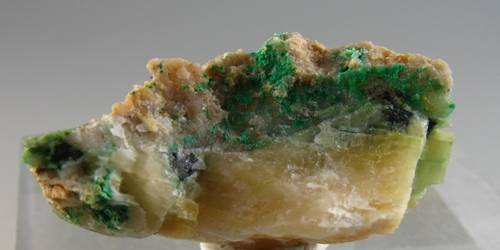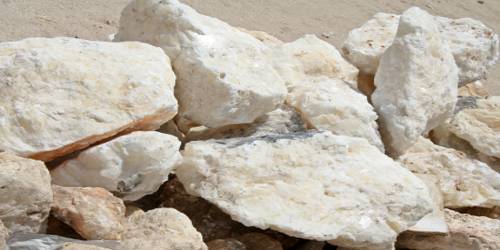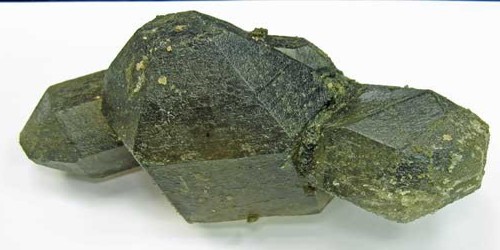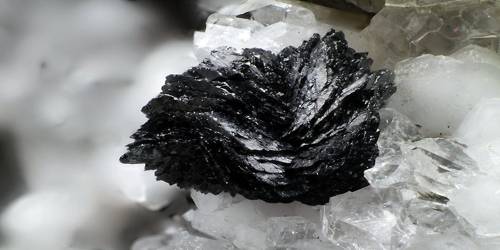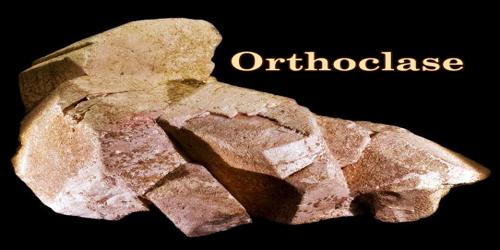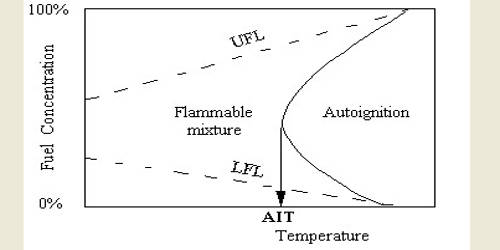Cesbronite is a copper-tellurium oxysalt mineral with the chemical formula Cu3Te6+O4(OH)4 (IMA 17-C). It was first found in the Bambollita (“La Oriental”) mine in the Mexican state of Sonora. It is a copper tellurite mineral that was first discovered in 1974 from Bambollita mine, Moctezuma, Sonora, Mexico. It was named after Fabien Cesbron, French mineralogist, Bureau de Recherches Geologiques et Miniere, Orleans. France.
It is colored green and its crystals are orthorhombic dipyramidal. Cesbronite is rated 3 on the Mohs Scale. It is named after Fabien Cesbron (born 1938), a French mineralogist.
General Information
- Category: Copper-tellurium oxysalt
- Formula: Cu3Te6+O4(OH)4
- Crystal system: Orthorhombic
- Crystal class: Dipyramidal (mmm)

Properties
Cesbronite is green mineral having subadamantine luster, non-fluorescent luminescence and light green streak. It exhibits good cleavage and brittle fractures. It can be formed as spherical rounded aggregates. The density of cesbronite is 4.45 g/cm3, and its hardness is 3.
- Color: Green
- Cleavage: poor on {010}, good on {021}
- Tenacity: Brittle
- Mohs scale hardness: 3
- Luster: Subadamantine
- Streak: Green
- Diaphaneity: Translucent
- Specific gravity: 4.45 (measured)
Occurrence
Cesbronite occurs as a secondary mineral in an oxidized Cu–Te–Pb sulfide deposit. It is closely associated with hematite, jensenite, leisingite, utahite, xocomecatlite, carlfriesite, teineite and argentian gold. It also occurs in the Tombstone District of Cochise County, Arizona and the Tintic District of the East Tintic Mountains, Juab County, Utah. It is often associated with argentian gold, teineite, carlfriesite, xocomecatlite, utahite, leisingite, jensenite, and hematite.
Information Source:
